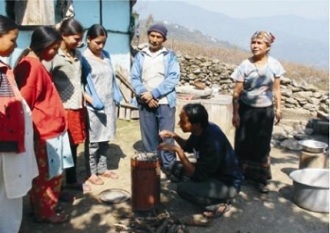Researchers have now pinpointed a compound common in disparate forms of smoke that might explain some of the frequent ills associated with it. The findings are described in a new paper published online May 16 in the Proceedings of the National Academy of Sciences.
“We found isocyanic acid in a number of places, from air in downtown Los Angeles and air downwind of a Colorado wildfire, to cigarette smoke,” Jim Roberts, a chemist at NOAA’s Earth System Research Laboratory and co-author of the new study, said in a prepared statement. Isocyanic acid—abbreviated as HNCO—is a substance known to act in the body along disease-related pathways through a process known as protein carbamylation.
Although the new study did not look specifically at how ambient HNCO might be affecting people’s health, the researchers note that it makes sense that it would have easy access into the human body’s innards. “It dissolves readily in water, which means that humans can be exposed directly if it gets into eyes or lungs,” Roberts said.
This is the first time that HNCO had been measured in ambient air, the researchers report. To get specific readings, the team used a negative-ion proton-transfer chemical ionization mass spectrometer.
In addition to these significant concerns for people living here in the U.S., the risks might be greater for the many people in the developing world who use open-fire stoves, or cook stoves. A lab test of burning biomass produced concentrations of 600 parts per billion when measured close to the flames. “There are literally billions of people in the world who burn biomass for cooking and heating,” Roberts said. “If these indoor fires release similar levels of isocyanic acid as the fires we studied in the laboratories, families could be exposed to high levels of the chemical.”
The team underscored the need for further research into how HNCO might be affecting human health—especially with the prevalence of biomass-based stoves and the prediction for more wild fires due to climate change. “We may be facing a future of higher amounts of HNCO in the atmosphere,” Roberts said. And although that might be bad news for human health, Roberts noted that at least “it is fortunate that now we can measure it.”



